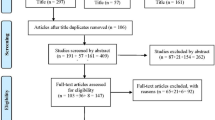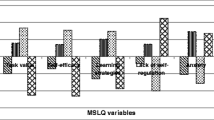Abstract
This study used concept map content analysis and interviews to gain insights into the knowledge organisation and knowledge processing of pre-service teachers. Forty-eight preservice teachers of elementary science from a teachers’ training college in Sarawak, Malaysia, participated in this study. Correlations between achievement and five concept map characteristics showed that there were significant positive correlations (p<.01) between achievement and: the number of appropriate links; the average number of appropriate concepts per cluster; and, the hierarchy score of subjects’ concept maps, and significant negative correlations (p<.01) between achievement and: the number of inappropriate links; and, the average number of inappropriate concepts per cluster. Interviews with high-achievers and lowachievers revealed that there were differences in the way they processed knowledge during concept mapping. The high-achievers were more thorough than were the low-achievers in cognitive processing of knowledge, taking time to make sense of concepts, sort and group concepts, form relevant links between concepts, and organise concepts hierarchically. Active cognitive processing of knowledge seems to be related to more complex, well-integrated cognitive structures for the material learned.
Similar content being viewed by others
References
Ahlberg, M. (1993, August).Concept maps, Vee diagrams and rhetorical argumentation analysis (RAA): Three educational theory-based tools to facilitate meaningful learning. Paper presented in Misconceptions Seminar, Cornell University, Ithaca, New York.
Bandura, A. (1994). Self-efficacy. In R. J. Corsini (Ed.),Encyclopaedia of psychology (2nd ed.) (Vol. 3, pp. 368–369). New York, NY: John Wiley & Sons.
Beyerbach, B. A. (1988). Developing a technical vocabulary on teacher planning: Preservice teachers’ concept maps.Teaching and Teacher Education, 14(4), 339–347.
Chi, M. T. H., Feltovich, P. J., & Glaser, R. (1981). Categorization and representation of physics problems by experts and novices.Cognitive Science, 5, 121–152.
Chi, M. T. H., Leeuw, N., Chiu, M. H., & Lavancher, C. (1994). Eliciting self-explanations improves understanding.Cognitive Science, 18, 439–477.
Fraser, K., & Edwards, J. (1985). The effects of training in concept mapping on student achievement in traditional tests.Research in Science Education 15, 158–165.
Goldsmith, T., Johnson, P., & Acton, W. (1991). Assessing structural knowledge.Journal of Educational Psychology, 83, 88–96.
King, A. (1994). Guiding knowledge construction in the classroom: Effects of teaching children how to question and how to explain.American Educational Research Journal, 31(2), 338–368.
Larkin, J. H., McDermott, J., Simon, D. P., & Simon, H. A. (1980). Expert and novice performance in solving physics problems.Science, 208, 1335–142.
Livingston, C., & Borko, H. (1989, July–August). Expert-Novice differences in teaching: A cognitive analysis and implications for teacher education.Journal of Teacher Education, 37, 36–42.
Lonka, K., Lindblom-Ylainne, S., & Maury, S. (1994). The effect of study strategies on learning from text.Learning and Instruction, 4, 253–271.
Malone, J., & Dekkers, J. (1984). The concept map as an aid to instruction in science and mathematics.School Science and Mathematics, 84(3), 220–231.
Mason, C. L. (1992). Concept mapping: A tool to develop reflective science instruction.Science Education, 76(1), 51–63.
McCrindle, A. R., & Christensen, C. A. (1995). The impact of learning journals on metacognitive and cognitive processes and learning performance.Learning and Instruction, 5, 167–185.
Mestre, J., & Touger, J. (1989, September). Cognitive research—What’s in it for physics teachers?The Physics Teacher, 447–456.
Novak, J. D. (1977).A theory of education. Ithaca: Cornell University.
Novak, J. D. (1988). Learning science and the science of learning.Studies in Science Education, 15, 77–101.
Novak, J. D. (1990). Concept mapping: A useful tool for science education.Journal of Research in Science Teaching, 27(10), 937–949.
Novak, J. D., & Gowin, D. B. (1984).Learning how to learn. New York, NY: Cambridge University Press.
Novak, J. D., Gowin, D. B., & Johansen, G. T. (1983). The use of concept mapping and knowledge vee mapping with junior high school science students.Science Education, 67(5), 625–645.
Novak, J. D., & Musonda, D. (1991). A twelve-year longitudinal study of science concept learning.American Educational Research Journal, 28(1), 117–153.
Pankratius, W. J. (1990). Building an organised knowledge base: Concept mapping and achievement in secondary school physics.Journal of Research in Science Teaching, 27(4), 315–333.
Okebukola, P. A. (1990). Attaining meaningful learning of concepts in genetics and ecology: An examination of the potency of the concept mapping technique.Journal of Research in Science Teaching, 27(5), 493–504.
Pankratius, W. J. (1990). Building an organized knowledge base: Concept mapping and achievement in secondary school physics.Journal of Research in Science Teaching, 27(4), 315–333.
Roehler, L., Duffy, G., Conley, M., Herrmann, B., Johnson, J., & Michelson, S. (1990).Teachers’ knowledge structure: Documenting their development and their relationship to instruction. East Lansing, MI: Michigan State University Institute for Teaching.
Schmid, R. F., & Telaro, G. (1990). Concept mapping as an instructional strategy for high school biology.Journal of Educational Research, 84, 78–85.
Wallace, J. D., & Mintzes, J. J. (1990). The concept map as a research tool: Exploring conceptual change in biology.Journal of Research in Science Teaching, 27(10), 1033–1052.
Weinstein, C. F., & Mayer, R. E. (1986). The teaching of learning strategies. In M. C. Wittrock (Ed.),Handbook of research on teaching (3rd ed.) (pp. 315–327). New York: Macmillan.
Winitzky, N., Kauchak, D., & Kelly, M. (1994). Measuring teachers’ structural knowledge.Teaching and Teacher Education, 10(2), 125–139.
Author information
Authors and Affiliations
Corresponding author
Rights and permissions
About this article
Cite this article
Siew Lian, M.W. An investigation into high-achiever and low-achiever knowledge organisation and knowledge processing in concept mapping: A case study. Research in Science Education 28, 337–352 (1998). https://doi.org/10.1007/BF02461567
Issue Date:
DOI: https://doi.org/10.1007/BF02461567




